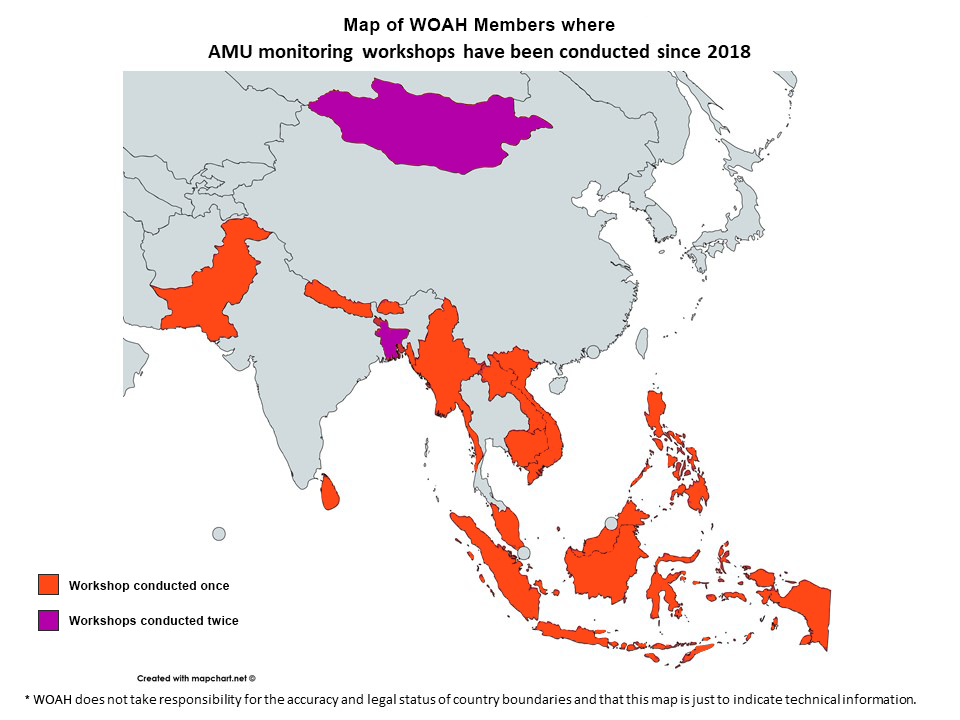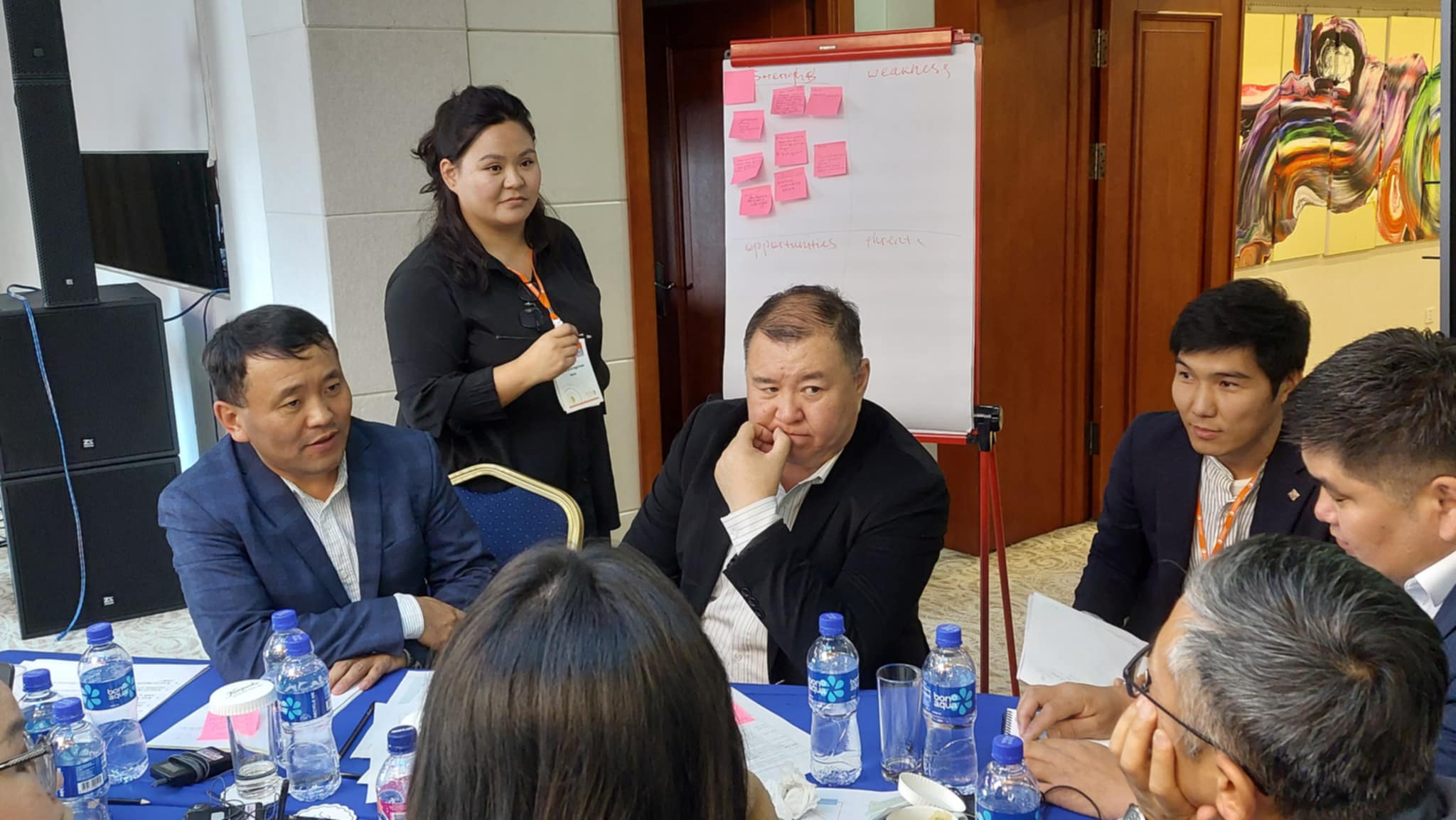The World Organisation for Animal Health (WOAH) Regional Representation for Asia and the Pacific (RRAP) and the Sub-Regional Representation for South East Asia (SRR) have been undertaking activities on Antimicrobial Resistance (AMR) and Antimicrobial Usage (AMU) in the countries of the Asia Pacific region since 2018, to drive the agenda of AMR/AMU in the face of increasing AMR threat emergence.
One of these activities is organising a workshop series on monitoring quantities and usage patterns of antimicrobials used in animals, conducted in 14 regional countries as of 21 November 2024. The main objective of these workshops is to understand the prevailing legislation related to AMR/AMU, the state of play of the AMU supply chain, the roles of different regulatory agencies, and their coordination status. The ultimate aim is to develop recommendations for countries on setting up AMU monitoring mechanisms to address the threat of AMR.
the prevailing legislation related to AMR/AMU, the state of play of the AMU supply chain, the roles of different regulatory agencies, and their coordination status.
Countries are at varying stages of implementing antimicrobial usage monitoring in animals and are facing challenges such as weak legislation (including implementation issues) and weak intersectoral coordination. There is also a lack of capacity for monitoring the quality of veterinary medicinal products, poor monitoring mechanisms to collect AMU data from other stakeholders and end users, and lack of awareness – especially amongst policymakers, producers and consumers.
Some of the key outputs of these workshops include the need to review/update legislation to address AMR/AMU, enhance coordination amongst key stakeholders for AMU data management and sharing, develop a simple database to record AMU data, and set up national AMU monitoring systems that address the whole AMU supply chain in each country.



